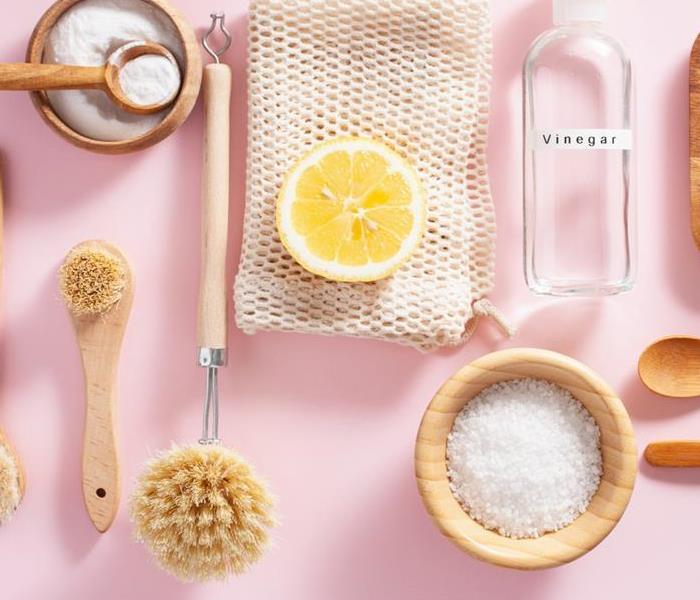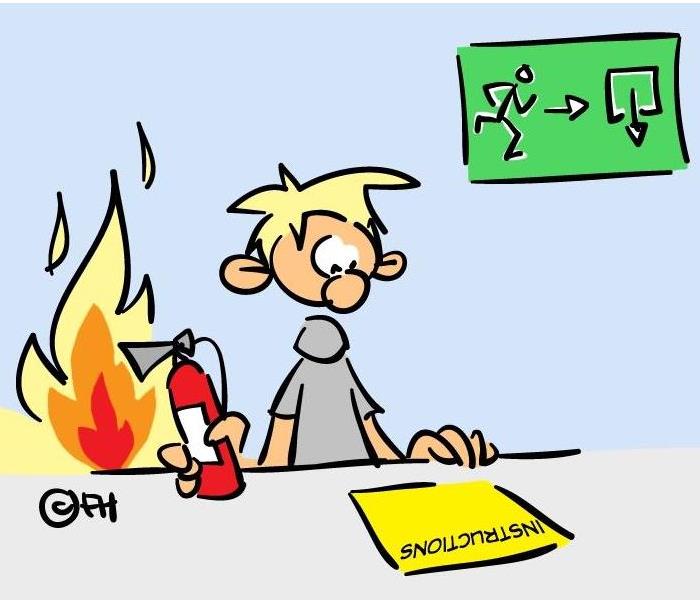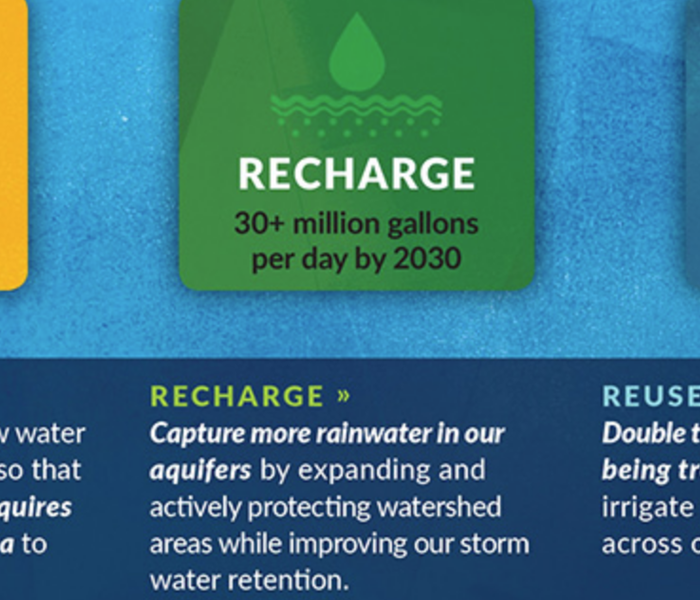Recent General Posts
13 Expert Tips for Dazzling Christmas Lights
11/5/2021 (Permalink)
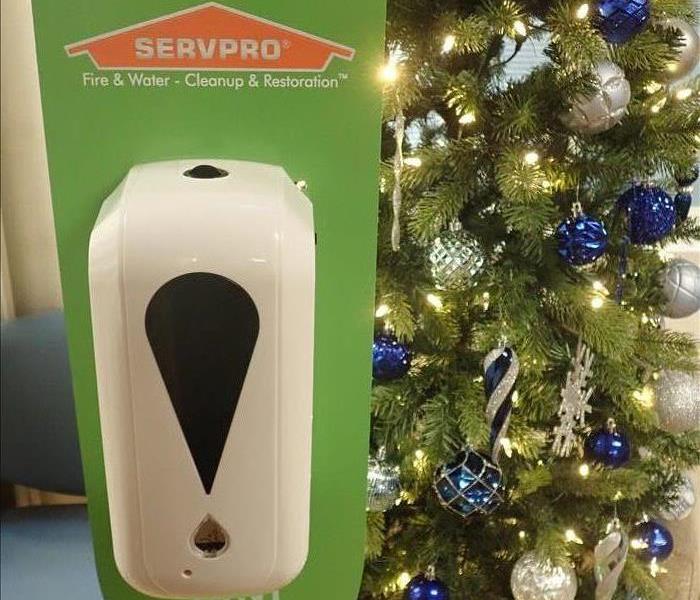 Light up your tree, not your home
Light up your tree, not your home
1. Start out small.
If you're a Christmas lights novice, light just two or three items, such as trees or bushes, to serve as focal points. Add new displays each year.
2. Stay safe.
Only use lights with the UL (Underwriters Laboratories) label and be sure you're using lights designed specifically for outdoor use.
3. Know your lights.
When it comes to holiday lights, there's a type available for every nook and cranny of your house and yard. Whether you want blinking rope lights outlining windows or net lights blanketing bushes, wising up on your holiday light knowledge will help you get the most bang for your buck
4. Check for burned-out lights.
Test light strings and replace any burned-out lights before decking the halls. Burned-out lights drain power from the entire light string, and the other bulbs will grow dimmer.
5. Out with the old, in with the new.
Avoid old-fashioned nails, staples, screws, or hooks when mounting your display. Electrical tape is a quick and easy alternative -- it won't destroy your roof, and it's a good tool for protecting electrical connections. Clips, such as shingle tab or parapet clips, hold lights to surfaces by applying simple, safe pressure.
6. Use a sturdy ladder.
Enlist a helper to keep you steady as you hang lights on very tall tree -- you'll stay safe and you'll be able to reach the branches easily. Attach lights to branches with tree clips or twist ties.
7. Work your way up.
To string trunks of deciduous trees, start at the base and wrap the lights around in a spiral. If you want to illuminate an evergreen, however, start at the top and zigzag lights through the center of the tree, getting wider with the tree's shape.
8. Consider the location.
If your evergreen can only be seen by passersby from the front, save lights and work by decorating the tree front only.
9. Add some dimension.
Consider ground and stake lighting for extra holiday oomph. Multicolored lights work well for outlining walks, paths, and driveways.
10. Avoid bright light overload.
Holiday lights can be dazzling and fun, but be careful not to overload your circuits. Include no more than 1,400 watts on a circuit. If other lights in the house dim when you turn on the holiday lights, your circuit is overloaded.
11. Look around for added sparkle.
Find illuminating inspiration in unexpected places. Perhaps a birdbath or decorative porch columns would look pretty with a little extra light. For hard-to-reach spots, or any place you don't want to use electricity, try battery-operated mini lights.
12. Call in the pros.
If you don't have roofing experience, limit your lights to eaves, gables, and the edge of the roof. Keep lights and cords away from metal. Beware of overheated wires, aluminum gutters, and ironwork decor. If you want more lights on the roof itself, call a professional lighting company.
13. Hit the switch.
Turn off outdoor lights before going to bed, and don't leave them on when you're away from home, unless they're attached to a timer with a photocell.
DIY Cleaning in the Urban Eastern Honolulu Area
10/31/2021 (Permalink)
There are always new products coming in and out of the product, chemicals are being taken on and off lists of cleaning approval with the more data present. Some of us with allergies, pets, children, or other sensitivities can not always buy products with bleach in it and hope for the best.
Additionally some of these products are not very effective for the nefarious chores you use it for. Like bleach products- the drying time of chlorine is very short; therefore bleach may not always clean your surfaces. It dries way too quickly for porous surfaces like wood, grout, and other organic materials. This is because the time needed to seep into the surface of the furniture being cleaned is cut in half with some chemicals and their properties.
Bacteria can be killed with UV light, there are so many different ways to properly, effectively disinfect your space whether it is residential or commercial. One of those ways can be naturally, saving you money and also another step to a more sustainable future. Sustainability to the new cornerstone of our everyday life. Here are some common household ingredients that can also be used to clean!
Lemon
Lemons are one of the most effective ways to clean because of the acidic nature of lemons. This is also not a very hard fix as many sprays, chemicals, and solvents often use citrus aromas for a satisfactory clean. Lemons are a great way to add a fresh scent around, cutting lemons in half and placing them around your house is one of the best ways to deodorize. You can polish your furniture, clean your drain, use it for everyday wiping surfaces and more. Lemons are one of the most natural ingredients that is found in chemical sprays for cleaning anyway this is an easy ingredient to incorporate. You could even clean your microwave by using lemon juice with water, heating it up the condensation will clean most of your staining. Another way is by wettering the surface of your cutting board, adding some salt enough for texture on the board, and then going in with half a slice of lemon and scrubbing the salt. This cleans your board, and also deodorizes it.
Coffee Grounds
This is another deodorizer that is not commonly mentioned when one thinks about natural or DIY cleaning products. Coffee grounds have a bigger range of jobs than that of lemons or even the later baking soda. Coffee grounds can be used to re-stain furniture, deodorize fridges, cleaning/deodorizing pipes and sinks and also cleaning your hands or dishes. Another way is to also put coffee grounds on fire ashes, spills or even puke. The coffee grounds soak up the moisture and stop the smell in its tracks.
Baking Soda
Baking soda is one of the oldest natural cleaning solutions since the 1950s, this basic powder is a great product for all kinds of cleaning, sanitizing and deodorizing. It is also pretty reactive with a few ingredients that can be to the advantage of the person cleaning. Because this chemical is from a basic nature it tends to destroy organic molecules that tend to be acidic. This means that baking soda breaks down dirt, malodorous odors, grease, and other alkane molecules. One of the best ways to use baking soda that isn’t with lemon is for your carpet, sprinkling some baking soda on top of your carpet and then waiting for a few hours. Deodorizes and thus cleans all the residue left from foot oil, matter found from your shoe...etc.
There are numerous ways to clean a commercial or residential space, SERVPRO of East Honolulu proudly uses solvents only endorsed by the EPA and are friendly to the health of organisms that use the building. There are a lot of misconceptions when it comes to cleaning, especially naturally. Think about incorporating them into your cleaning routine, for a refreshed scent, and happier lungs.
Call us with any questions, comments, or concerns at (808)395-9545, we are a locally owned franchise. We are here for our community- our customers, be more sustainable and environmentally conscious today! Starting with cleaning your counters with a little bit of lemon water instead of bleach.
National Preparedness Month!
6/11/2020 (Permalink)
Happy National Preparedness Month! Here at SERVPRO of East Honolulu we celebrate this month for it's awareness and the adherence to safety measures we encourage for all of our customers.
Last year's theme was: Prepared Not Scared
The government had hosted an individual theme each week in accordance to the theme and essentials for National Preparedness. Preparedness can be more than national disasters! There are always so many resources for the public, and each individual week assess how to reach certain people.
Like week 3 was about educating the youth about being prepared and aware.
Each year the EFFAK toolkit is also updated in order for the American public to be the safest as possible.
EFFAK stands for Emergency Financial First Aid Kit, and has tools and steps to be financially prepared for disaster and all information under the sun about money in relations to preparing and saving for a rainy day.
When you go to the ready.gov website which is where the National Preparedness Month is hosted, there are options to look at different disasters.
Spread awareness about National Preparedness Month by participating on social media and using the appropriate hastags
#BeReady
Water Saving Tips for the Hot Summer Ahead
5/27/2020 (Permalink)
Last year we saw 45 record-breaking days in regard to temperature here in Honolulu. There has been a gradual increase in temperature for the last few year in the Hawai'i chain, and it is projected to be another hot summer in the coming weeks.
There is also an increase usage of water, since 2013 an average person in Hawai'i uses 164 gallons per day. In projection of the future, the county of Hawai'i wants us to kokua and try to lower our water usage down to 130 gallons per day. That is a total of 34 gallons that are needed to be cut from our daily lives. Here are some ways to cut down our water usage but also keeping in mind the upcoming warm weather:
- maintain your garden, be mindful of your weeds. Weeds are really pesky and it takes years for weeds to be eradicated from one's garden. Although it takes a long time it is in your utmost interest to take care of weeds. Start spot treating your garden by plucking weeds when they arise. Weeds grow at an exponential rate compared to other plants, although they have some good properties; they are unpleasant and hurt the aesthetics of your garden. They also use a lot of water taking from your plants, when you get rid of weeds you need less water to keep your yard space healthy.
- on topic of gardening or anything greenery, make sure you water your plants during the morning or evening. When you water your plants with the sun beaming on them the water will be more likely to evaporate. This is a waste of water and is not the most effective
-make sure that you water your plants when they need it, like us they are mostly water. With a whopping 90% of their body mass being water, water is crucial for their livelihood. They need water to photosynthesize, to stay hydrated, and to perform regular functions. It isn't necessary to keep a schedule for plants rather, when they look parched or it is due time. Learn more about your plants and the average weekly water intake.
- take short showers! One of the most re-iterated and easiest ways to reduce your water intake is by showering less. The average american uses about 17.1 gallons of water per shower that lasts about 8 mins. This is one of the main reasons why the Hawaiian average is so high. Taking this long of a shower actually can have adverse side effects. Some being the drying out of skin, skin aggravation from towel drying or over exfoliating (it is a thing!) and getting rid of the healthy bacteria before the overgrowth of bad bacteria.
- make sure that your house is in tiptop shape! a singular drip can make one lose about 5 gallons a day. When there are leaks in your house the drips will continual expound upon each other. If there are leaks, try to stop them as soon as possible. Or call professionals like us here at SERVPRO of East Honolulu. If you want to be extra cautious, flush some food coloring down your toilet tank, if it seeps into the bowl you have a leak.
- be a conscious member of your community. Be proactive and learn how to conserve your water sources as a community. Find your own average use of water, USGS has a free estimator to see how much water you use.
- find ingenious ways to replace water for conventional cleaning. This can be anything you do that uses water, try to cut down that water usage or replace it all together! This can be using a broom to clean your patio or garage instead of a hose or leaving out your food to defrost instead of using water.
- only run your dishwasher and washing machines only when it is full. This isn't only a water saver and most efficient it will save you a lot of money in the long run.
Here in Hawai'i the county expect at least 100 million more gallons to be used a day in the oncoming years. This can only happen if we are more cautious about our water usage. Look at your local websites, and city data for more information.
So... Why Green?
5/20/2020 (Permalink)
SERVPRO of East Honolulu is known for a few things, like their superior cleaning skills and their quick restoration processes. There is ease with everything they do, but they also are known for the bright green logos. When you see a big van or car driving around with a bright green exterior one usually knows that this is a SERVPRO car.
SERVPRO originally chose this color in the 1970s because of how it popped when surveyed people were asked what color was most memorable. The color green is now almost brand recognition for SERVPRO.
Interestingly enough, there is now a shade called SERVPRO green! But, this green is more than just a marketing tactic or brand recognition.
For us at SERVPRO East Honolulu, this green is a sense of pride. When we wear our SERVPRO uniforms we give our customers assurance of excellence.
As long as we are wearing this green we will continue to give you the SERVPRO quality of restoration, and amazing customer service. We are prideful when we ride in the bright green vans as we are assuring you that we do everything with efficiency and legitimacy. And to us, that is why the SERVPRO green is important.
Are you ready for the 2020 Hurricane Season? Our guide to prevent hurricane damage
5/16/2020 (Permalink)
The Pacific Hurricane Season started yesterday and runs through until November 30. We of SERVPRO of East Honolulu know the repercussions of hurricane-related issues and recommend a few things for this coming season:
- Preparedness
- Make sure you know your insurance policy, this will be with your homeowners insurance. Know how you are covered from windstorm damage.
- Spam! The first thing that runs out during a hurricane warning is Spam and toilet paper. Make sure, before there is even a storm warning, you have enough food, house supplies, and hygienic materials for your household for at least 48 hours.
- Strengthening your home
- Learn what types of water damage you can have, also know where your least secure areas of the house are.
- This is your garage doors, windows, doors, and roof.
These 2 simple tips can keep you prepared, and are simple enough to uphold throughout the season! On behalf of the SERVPRO of East Honolulu we hope you stay safe!
5 Extremely Common Workplace Disasters That You Didn’t See Coming
1/16/2017 (Permalink)
Workplace disasters come in a variety of forms, from slips and falls to fires and flooding. The scariest part? Disasters like these aren’t exactly rare — in fact, they’re relatively common. That means if you’re in business, chances are you’ll be dealing with a workplace disaster, in some shape or form, at some point. The only thing you can really do to stop it is to be aware of the risks and be ready to respond to them.
So, what should you be ready and waiting for, as a business owner? Here are five relatively common business disasters that are waiting in the wings, and which you can save your business gobs of time and money by adequately preparing for.
1. Fires
Fires can and do happen, it’s just hard to imagine that it could happen to you or your business. But businesses do experience fires, and the costs associated with them can be staggering. Even if you don’t lose any assets — equipment or buildings, for example — the time spent cleaning up and restoring your business to proper working order can take a huge toll.
And fire danger can be sneaky. Make sure your smoke and fire detectors are in working order, you have the necessary prevention and suppression systems in place, and a sound evacuation plan. Even a small fire can be cripplingly expensive for a small business. As of 2014, average losses due to a fire in the U.S. were almost $20,000 per structure.
2. Flooding
You don’t need heavy rain or precipitation for your business to experience flood or water damage — it may only take some leaky pipes, a busted water main, or even a winter freeze to knock your business operations out of commission. Flood and water damage can be extremely expensive to restore and clean up, particularly if you don’t immediately take care of the issue. Water can and will find its way into your business structures, threatening your electronics, inventory, and assets. The best and most cost-effective way to counter it is by having a professional take stock of any threats your building may have, and by knowing what to do in the immediate aftermath of a flood or busted pipe.
3. Mold
Do you know what often goes hand-in-hand with water and flooding damage? Mold — and that’s why it’s so important to have a professional cleaning and restoration team take care of water issues as soon as possible. Mold is sneaky and destructive, and can grow in places you’d never even think to look. It can also make you and your staff or customers sick, which may warrant some action from local building code regulators. Mold is fairly common too, depending on what part of the country your business is located in.
4. Weather damage
Severe weather is unpredictable and relatively rare, all things considered. For that reason, it’s easy for business owners to filter the threat of storm and severe weather damage from their minds. It can be hard to justify spending time and money planning for something that may never happen, right? Well, it’ll happen eventually — and if you don’t plan for it, you’ll end up dealing with broken windows, damage from falling trees, flooding, and a host of other potential issues.
If your business is in a hurricane, tornado, or blizzard-prone area, the potential for storm damage should be something you’re taking seriously.
5. Loss of power and water
We take a lot of things for granted living in modern America, and one of those things is the availability of electricity and clean water. But what happens if, for one reason or another, our electricity or water is cut off? We’re essentially sent back to the Stone Age — and if you’re a business owner, it means that your whole operation grinds to a screeching halt.
Be prepared for utility shutdowns as best you can. Have backup generators and water storage on hand, to ensure that critical systems can remain online until utilities are restored. If you’re not prepared, you could lose inventory (perhaps you require refrigeration or steady water flow?) or create the potential for a fire or flooding. Be prepared for the worst, and invest in contingency systems to keep your business afloat.
Service Response Guidelines
1/2/2017 (Permalink)
- Within 1 hour from notice of loss, SERVPRO of East Honolulu will contact your Insured to arrange for service.
- Within 4 Hours of loss notification, SERVPRO of East Honolulu will be on-site to start mitigation services (if necessary).
- Within 8 business hours, a verbal briefing of the scope will be communicated to the adjuster by SERVPRO of East Honolulu
*Exceptions may apply under certain conditions, such as a local catastrophic event or storm situation.
As a leader in fire and water cleanup and restoration, our number one goal is returning damage to its preloss condition, doing all we can to make it "Like it never even happened." Every SERVPRO Franchise Professional who steps onto a job site has a goal in mind. It is about total restoration of the damage and about the life of the customer being helped.
Like it was never dirty, like it never overflowed, like it never caught fire, like it never spilled, like it never smoldered--whatever the case, with SERVPRO our goal is to make it "Like it never even happened."
The Pentagon: A case study
1/2/2017 (Permalink)
When water pipes located in the basement of the Pentagon burst early one morning, pouring 1.8 million gallons of water over 565,000 square feet - or roughly 17 miles of hallway - SERVPRO Franchise Professionals completed the enormous task of drying the structure in just 7 days.
Following the events of September 11, 2001, SERVPRO Franchise Professionals were once more called upon to assist with the cleanup & restoration of the Pentagon. In spite of the emotions & difficulties involved in the restoration effort, SERVPRO Franchise Professionals dried nearly 300,000 square feet in addition to providing fire, soot, and smoke cleanup and restoration services. Upon completion of the drying assignment, SERVPRO Franchise Professionals provided mold remediation services in other sections of the facility. SERVPRO Franchise Professionals met the challenge and completed the process in just 90 days.
Four principles of drying a structure, #1
9/18/2015 (Permalink)
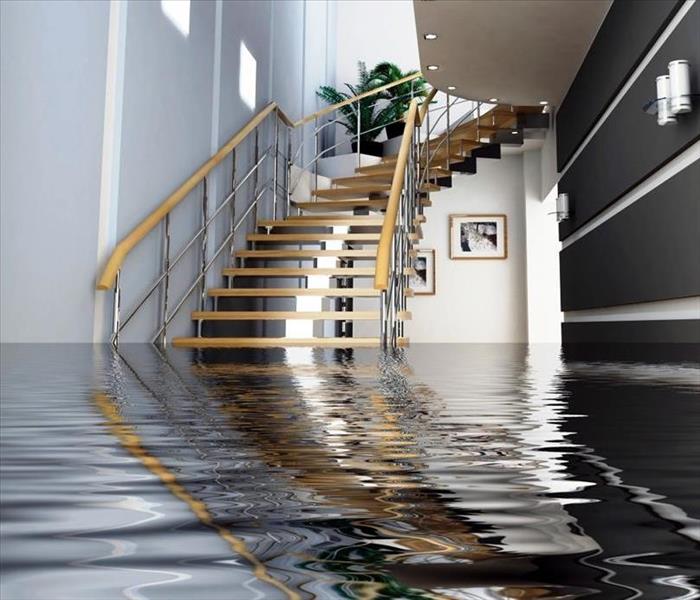 Do you know why you cool down when you sweat?
Do you know why you cool down when you sweat?
SERVPRO's drying methodology is how we are able to fully dry structure in most cases without demolition. We use a basic understanding of thermal dynamics and psychometrics to successfully dry structures by the least intrusive means possible. Our drying methodology is comprised of four principles. Today we will explain one.
The first principle of drying a structure is the removal of excess water. Using a machine called an extractor typically does this. The more water that is removed, the faster the structure will dry. It is far easier to physically remove water than it is to remove it through evaporation and dehumidification. So if you don’t have an extractor, call a professional who does.
As moisture evaporates from a wet surface, its surface becomes cooler. This is called "evaporative cooling". This is exactly why you cool down when you sweat!
We will continue covering the four methods of drying a structure in the next blog post.
Hurricane season is here: necessary steps to restore your property
8/25/2015 (Permalink)
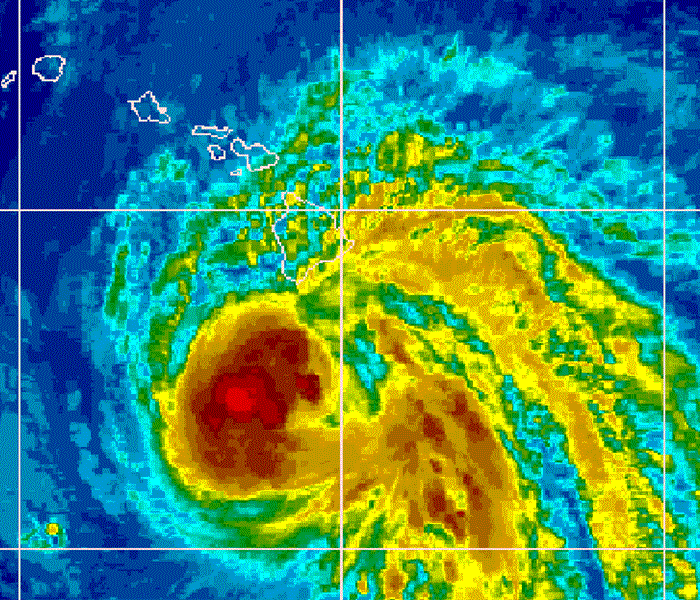 Hawaii is experiencing an especially active hurricane season. These steps will help you address your water damage. Call 808-395-9545 for help.
Hawaii is experiencing an especially active hurricane season. These steps will help you address your water damage. Call 808-395-9545 for help.
Every water damage event is a little different, and requires a unique solution, but the general process stays the same.
Step 1 - Emergency Contact
When you call, our representative will guide you through several questions that will help us respond to your water emergency more quickly and efficiently. This initial contact is an important part of a fast, effective restoration.
Step 2 - Inspection and Water Damage Assessment
We will carefully inspect your property’s water damage, determining the type of water damage and the areas affected. This is a crucial step to creating an effective plan of action that will result in a successful restoration.
Step 3 - Water Removal / Water Extraction
Typically, hundreds or thousands of gallons of water are removed using our powerful pumps and vacuums during the water removal process. We start this process as soon as possible to minimize further damage and to help prevent mold growth.
Step 4 - Drying and Dehumidification
After the bulk of the water has been removed, we use specialized equipment to target the water that’s harder to access. They use scientific drying methods to draw the remaining water and moisture from your property with air movers and dehumidifiers.
Step 5 - Cleaning and Sanitizing
Water damage also affects your belongings, like furniture, clothing, and personal items. We can clean restorable items using a number of specialized cleaning techniques. We also sanitize with antimicrobial treatments and remove odors using industrial air scrubbers and fogging equipment.
Step 6 - Restoration
The last step is restoring your home or business back to its pre-water damage condition. The restoration step can be relatively minor, such as replacing a few drywall panels, or could include major reconstruction, such as rebuilding entire rooms of a home or business.
How to deal with Black Mold?
8/11/2015 (Permalink)
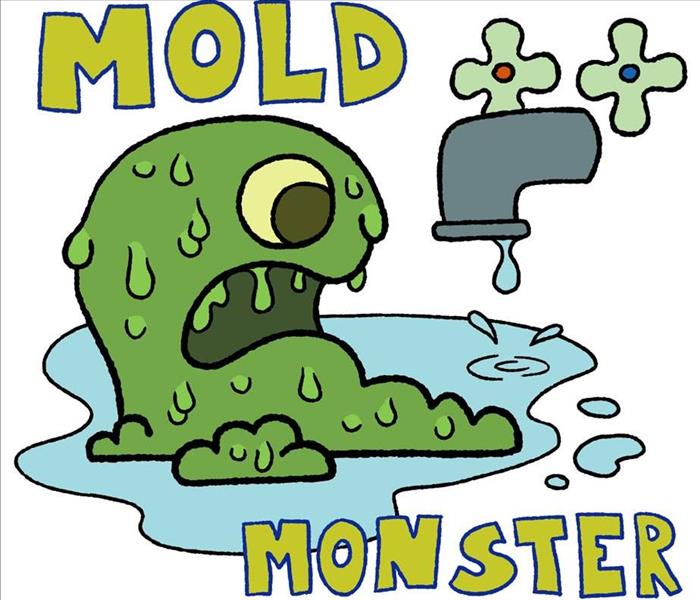 We will help you get your mold level under control. Call SERVPRO of East Honolulu at 808-395-9545.
We will help you get your mold level under control. Call SERVPRO of East Honolulu at 808-395-9545.
What Is Black Mold?
Stachybotrys chartarum is the type of mold often called “black mold” or “toxic mold”. Sensational news reports warn about the dangers of black mold and these stories can be alarming and confusing. Any mold in your home should be treated with caution.
What to Do:
Stay out of affected areas.Turn off the HVAC system and fans.Contact a SERVPRO Franchise Professional for mold remediation services.What NOT to Do:
Don’t touch or disturb the mold.Don’t blow air across any surfaces with visible or suspected mold growth.Don’t attempt to dry the area yourself.Don’t spray bleach or other disinfectants on the mold.How Do I Tell If It’s Black Mold?
Since many types of mold can produce allergens and irritants, you should contact a qualified mold remediation company regardless of the color or type of mold. In many instances, multiple types of mold can exist in the same house or structure.
If you suspect that you have a mold problem, contact SERVPRO of East Honolulu at 808-395-9545.
Revolutionized technology in soft contents cleaning has reached Hawaii
7/22/2015 (Permalink)
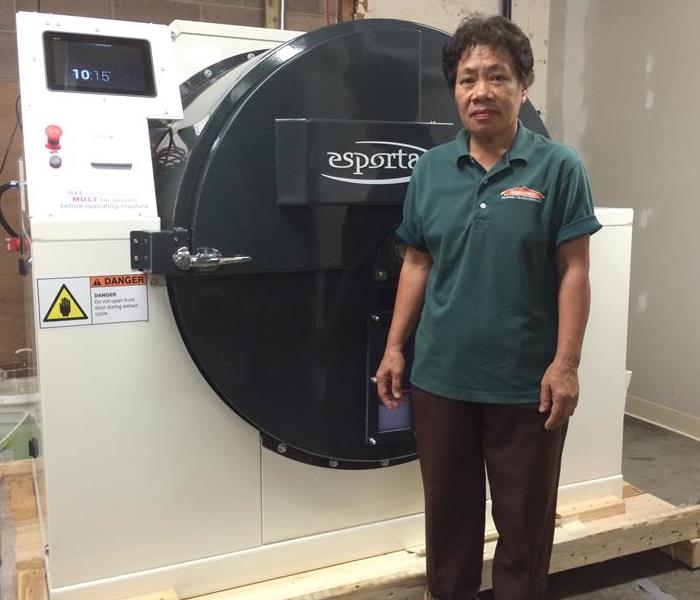 Items are held stationary in each compartment and do not tumble.
Items are held stationary in each compartment and do not tumble.
Imagine walking into the ocean. Living in Hawaii, it is easy to do. Feel the force of the waves pushing against your body. Now imagine that same force pushing through items inside of a washing machine. This is exactly what happens inside of the Esporta Wash System that uses a completely different technology than a regular machine.
The new method is called hydraulic water action. SERVPRO of East Honolulu, a local cleanup and restoration company has brought this revolutionary technology to Hawaii. Now items contaminated with sewage, mold, smoke and soot can be made like new and disinfected to food grade clean, “like it never even happened,” which is SERVPRO’s slogan.
“The Esporta iS4000 Wash System offers us an edge over our competitors by empowering us to restore items that would be normally marked as non-restorable,” said Raul Natividad, SERVPRO of East Honolulu owner who has been in the business for 25 years.
“Now we can wash anything from teddy bears and dolls to leather jackets, high end purses, shoes, pillows and blankets, taking out heavy odor and smoke, as well as killing bacteria,” Natividad said while sharing why he decided to invest in this system.
What would happen before is, adjusters would have to write items off as non-restorable and give checks to the insured for replacement cost.
A regular dry cleaner could only restore 40-50 percent of the soft contents from a claim and 0 (zero) percent of items from a sewage and mold loss. This has increased the cost of the claim and has raised premiums.
SERVPRO can now restore more than 90 percent of the soft contents on a claim, including mold and sewage.
This 2,200-pound machine is almost as tall as an average person and has a capacity of 100 pounds. Inside it is divided into four compartments.
Water and detergents are forced through the fabrics while the items are held stationary in each compartment and do not tumble.






 24/7 Emergency Service
24/7 Emergency Service
